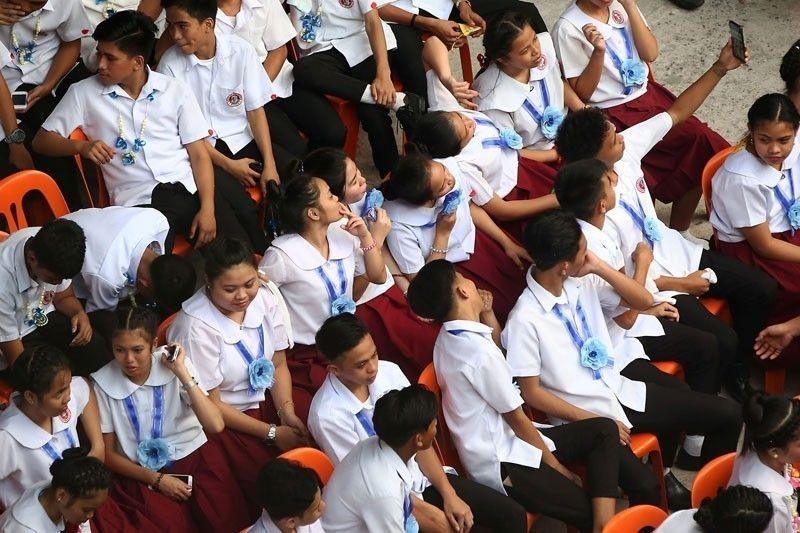Pinoy adolescents among least active in the world

MANILA, Philippines — Young Filipinos are among the least active in the world, with nine out of 10 adolescents aged 11 to 17 failing to meet the recommended moderate or vigorous physical activity of at least one hour per day.
A study backed by the World Health Organization recently published in medical journal The Lancet showed that adolescent boys from the Philippines top the list of those who are least active in the world, with 92.8 percent reporting insufficient physical activity in 2016.
Meanwhile, 94.1 percent of Filipina adolescents were found to have insufficient physical activity in 2016, ranking second to South Korea with 97.2 prevalence among its female adolescents.
The Philippines recorded insufficiency of physical activity of 93.4 percent on both genders, second only to South Korea with 94.2 percent.
This is more than 10 points above the global average of insufficient physical activity of 81 percent (78 percent in boys and 85 percent in girls).
While the global average slightly declined between 2001 and 2016, the study showed that the opposite was true for the Philippines.
In 2001, only 90.2 percent of Filipino boys and 93.9 percent of Filipino girls were recorded to have insufficient physical activity. The country’s average at the time was 92 percent.
Globally, Bangladesh was the country with the lowest prevalence of insufficient physical activity among boys (63 percent), girls (69 percent) and both genders (66 percent).
According to WHO, countries agreed during the World Health Assembly last year to reduce the global average by 15 percent.
Authors Regina Guthold, Gretchen Stevens, Leanne Riley and Fiona Bull warned that the little to no improvement – and in some cases, worsening patterns of activity in the 11 to 17 age group would prevent the achievement of this target.
“Urgent policy action to increase physical activity is needed now, particularly to promote and retain girls’ participation in physical activity,” Guthold was quoted as saying in a WHO press release.
“One hour out of their lives each day to be physically active and to get a health benefit from being physically active. That can be made up of different small chunks of their time, anything that adds up to 60 minutes,” added Riley, who noted the trend of girls being less active than boys as concerning.
Bull said the study “highlights that young people have the right to play and should be provided with the opportunities to realize their right to physical and mental health and wellbeing.”
“Strong political will and action can address the fact that four in every five adolescents do not experience the enjoyment and social, physical and mental health benefits of regular physical activity. Policymakers and stakeholders should be encouraged to act now for the health of this and future young generations,” she added.
The authors recommended the urgent scaling up of known effective policies and program to increase physical activity in adolescents, as well as multi-sectoral action to offer opportunities for young people to be more active.
The study was funded by the WHO and was conducted by researchers from the agency, as well as academics from the Imperial College London in the United Kingdom and the University of Western Australia.
The study used self-reported data from school-going adolescents, noting the lack of available information among those who are out of school.
“School-going adolescents may vary from others of the same age, as adolescents in school may be more likely to come from advantaged backgrounds that may be more focused on high achievement in other academic disciplines, rather than physical education and sport,” noted the WHO.
“Further, while the study covered 81 percent of the school-going adolescent population, this coverage varied by country income, ranging from 36 percent in low-income to 86 percent in high-income countries,” it added.
- Latest
- Trending





























